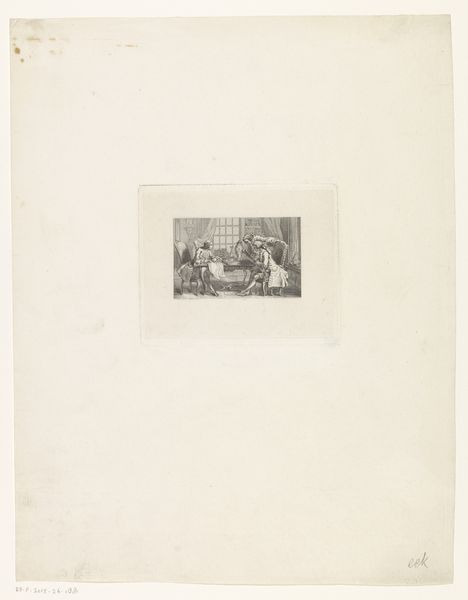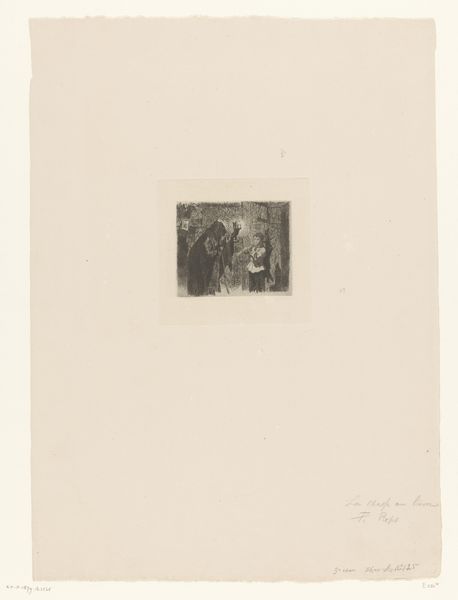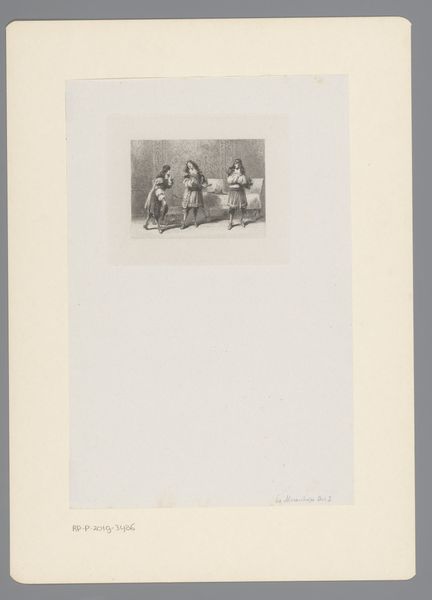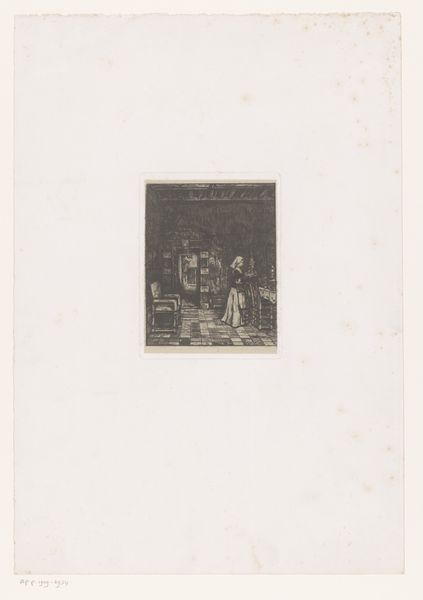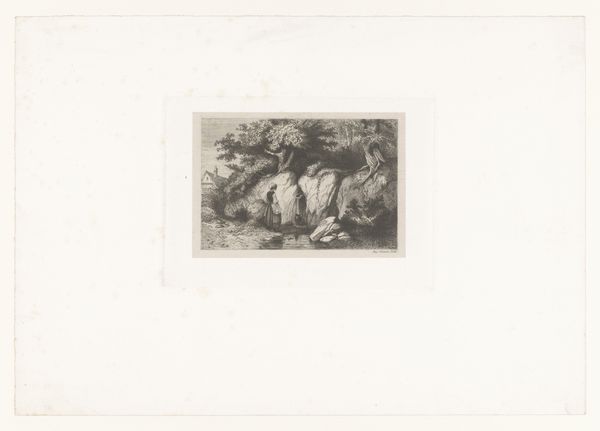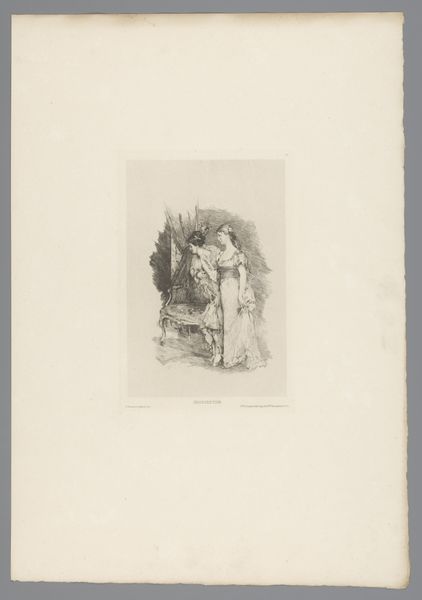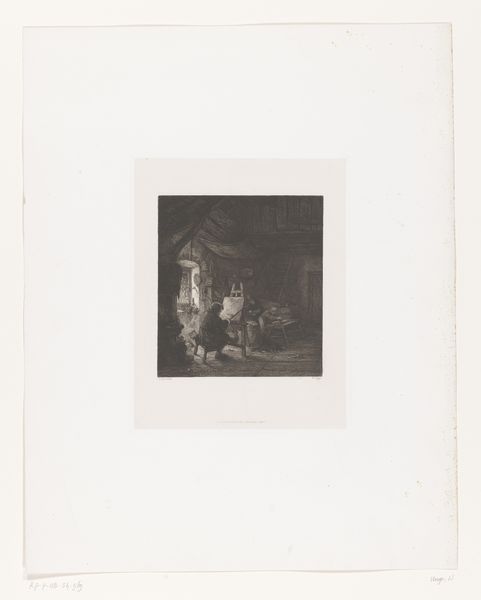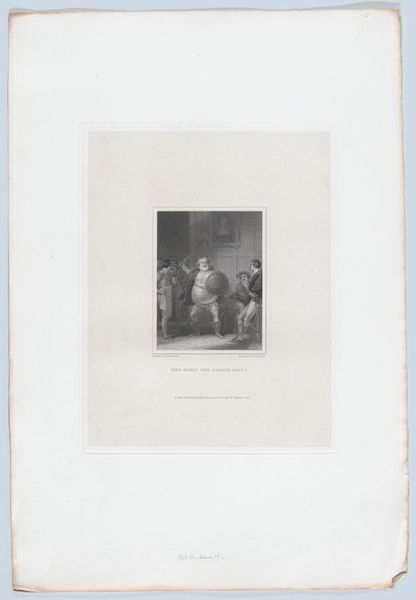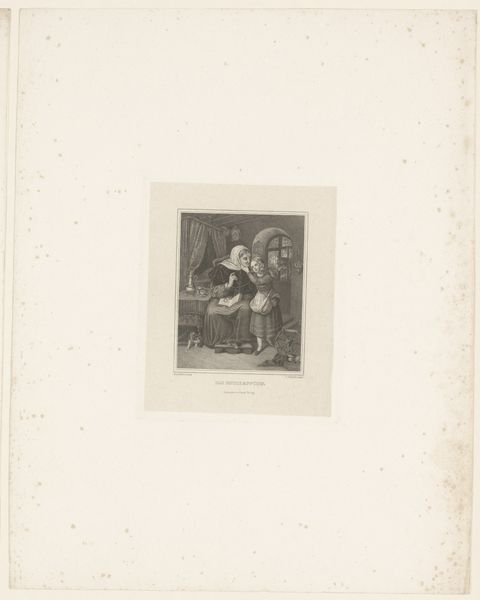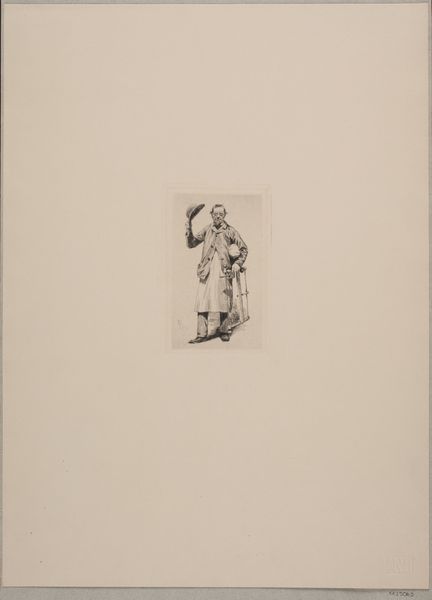
Dimensions: 130 mm (height) x 102 mm (width) (bladmaal)
Editor: Here we have "Bellmansk scene," created by G.V. Blom in 1896. It's a drawing, an etching, on paper using ink and pencil. It gives a sense of candid fun, but there’s something also kind of…static about the composition. What do you see in this piece? Curator: Focusing on the formal aspects, the etching technique results in a predominantly linear structure. Observe how the artist utilizes hatching and cross-hatching to generate tonal variations and model the figures. Do you notice the contrasts? The crispness of the figures in the foreground against the softer rendering of those further back? Editor: I do see that! The waiter almost jumps out because the outlines of the merrymakers fade more into the landscape. How would you connect this choice to the overall impression of the work? Curator: The composition draws a very definite distinction between activity and background, effectively accentuating a genre painting in the foreground. It is structured as a play with a figure framed by secondary players; by considering the relations among shapes, and contrasts of light and dark, we gain a deeper understanding of the artist's choices. What, in your opinion, does it evoke through these visual decisions? Editor: I guess I was seeing that static nature from this deliberate formal structure, dividing the picture like a photograph almost, despite it supposedly being an Impressionistic piece of work. I see that the lines define each part with intention and reinforce the staged aspect that I reacted to at first. Curator: Precisely. By closely examining the formal qualities, one appreciates how "Bellmansk scene" merges artistic intention with observational drawing in an engaging work. Editor: Thank you! Looking at those shapes and contrasts, and how they are positioned, makes the artist's intentions very clear. I wouldn't have thought to see this!
Comments
No comments
Be the first to comment and join the conversation on the ultimate creative platform.
